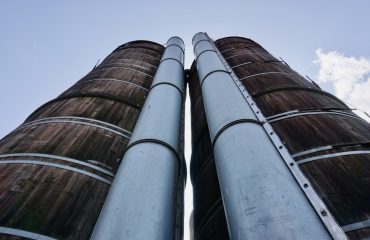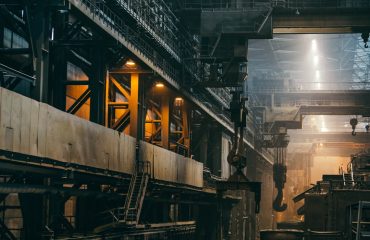Steel, the backbone of modern infrastructure and countless products, doesn’t simply appear. Its creation relies on a complex interplay of raw materials, each playing a crucial role in determining the final product’s quality and properties. Understanding these sources is key to appreciating the steel industry’s intricacies and its impact on the global economy.
1. Iron Ore: The Foundation of Steel
Iron ore is undoubtedly the most important raw material in steelmaking. This naturally occurring rock contains iron oxides, primarily hematite (Fe₂O₃) and magnetite (Fe₃O₄), along with various impurities like silica, alumina, and manganese. The iron content in commercially viable ore typically ranges from 30% to 65%, with higher concentrations being more economically attractive. Different types of iron ore deposits exist, including banded iron formations (BIFs), which are ancient sedimentary rocks, and lateritic deposits, formed through weathering processes in tropical climates. The extraction of iron ore involves mining, often through open-pit or underground methods, followed by crushing, grinding, and beneficiation to increase the iron content and remove unwanted impurities. Major iron ore producers include Australia, Brazil, China, India, and Russia, contributing significantly to the global steel supply chain.
2. Scrap Metal: A Sustainable Steel Ingredient
Scrap metal, encompassing discarded steel and iron products, plays a vital role in modern steel production. It’s a crucial secondary raw material, offering a sustainable and cost-effective alternative to relying solely on iron ore. Scrap metal sources are diverse, including industrial scrap from manufacturing processes, automotive scrap, construction and demolition debris, and even household appliances. The quality and composition of scrap metal vary widely, influencing its suitability for different steelmaking processes. Electric arc furnaces (EAFs), a prominent steelmaking technology, heavily rely on scrap metal as their primary raw material, significantly reducing the energy consumption and carbon emissions compared to traditional blast furnaces. The efficient collection, processing, and recycling of scrap metal are essential for environmental sustainability and resource management within the steel industry.
3. Coking Coal: Fueling the Blast Furnace
While not a direct component of steel itself, coking coal is indispensable in traditional blast furnace steelmaking. This high-quality coal, after undergoing a coking process, transforms into coke, a porous carbon fuel. Coke’s role is multifaceted: it acts as a fuel, providing the heat necessary to reduce iron oxides in the ore, and as a reducing agent, facilitating the chemical reaction that converts iron oxides into metallic iron. The quality of coking coal, particularly its low sulfur and ash content, is crucial for producing high-quality steel. Major coking coal reserves are concentrated in Australia, the United States, and Russia, making these countries significant players in the global steel industry’s supply chain. The increasing focus on reducing carbon emissions is pushing the steel industry to explore alternative fuels and technologies to reduce its reliance on coking coal.
4. Fluxing Materials: Refining the Steel
Fluxing materials, such as limestone and dolomite, are added during steelmaking to remove impurities and control the chemical composition of the molten steel. These materials react with silica and other impurities in the iron ore, forming slag—a molten waste product that floats on top of the molten steel. Slag removal is essential for producing clean steel with the desired properties. The choice of fluxing materials depends on the specific composition of the iron ore and the desired steel grade. The careful control of fluxing materials is critical for optimizing the steelmaking process and ensuring the quality of the final product. The sustainable sourcing and management of fluxing materials are also becoming increasingly important considerations for the environmentally conscious steel industry.
5. Alloying Elements: Tailoring Steel Properties
Alloying elements, such as manganese, chromium, nickel, molybdenum, and vanadium, are added to molten steel to enhance its specific properties. These elements are introduced in controlled quantities to modify the steel’s strength, hardness, ductility, corrosion resistance, and other characteristics. The precise combination and proportion of alloying elements determine the final steel grade, tailoring it for specific applications, from construction and automotive components to medical implants and aerospace parts. The sourcing of these alloying elements, many of which are derived from specific ores or recycled materials, is another critical aspect of the steel supply chain. The demand for specialized steel grades continues to drive innovation in alloying technology and the efficient sourcing of these essential components.
In conclusion, the production of steel is a complex process dependent on a diverse range of raw materials. From the foundational iron ore to the carefully selected alloying elements, each component contributes to the final product’s quality and characteristics. Understanding the origins and significance of these raw materials is crucial for appreciating the intricacies of the steel industry and its ongoing efforts towards sustainability and innovation.
SEO Tags:
Steel raw materials, Iron ore, Scrap metal recycling, Coking coal, Alloying elements




